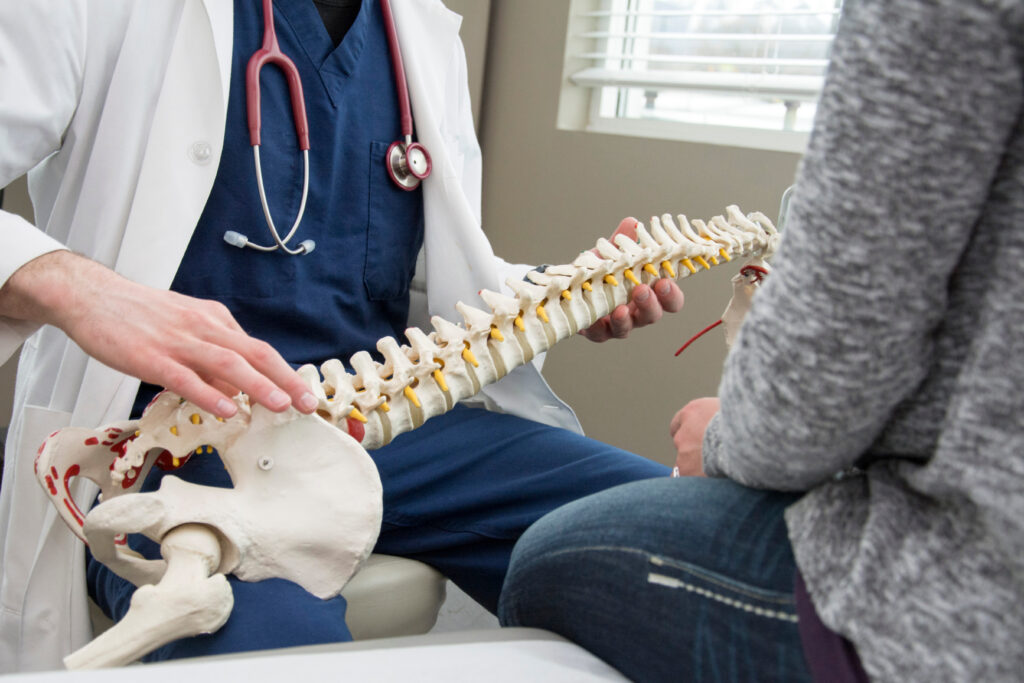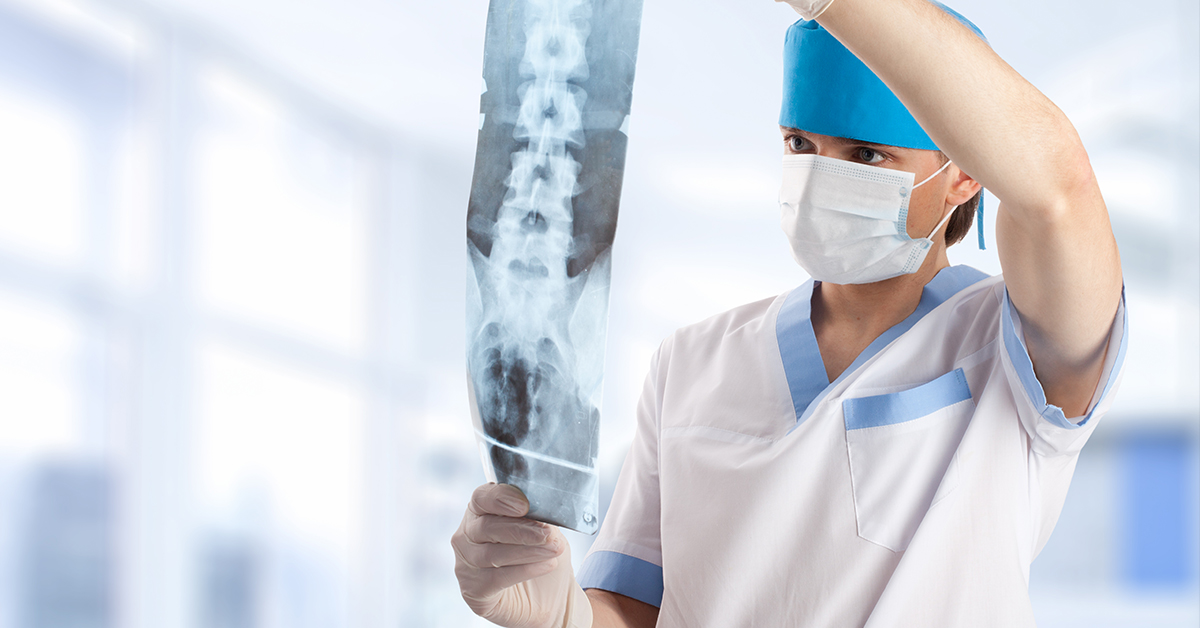Connecting with the Best Spine Surgeons in St Louis MO for Comprehensive Care
Connecting with the Best Spine Surgeons in St Louis MO for Comprehensive Care
Blog Article
What Spinal Column Issues Generally Cause Procedure for Relief?
Spine concerns that necessitate medical intervention typically arise when traditional treatment options fall short to supply sufficient relief from consistent pain and practical disability. Problems such as herniated discs, spinal stenosis, and degenerative disc condition frequently result in medical treatments aimed at minimizing symptoms and restoring mobility. Recognizing the certain indications for surgery and the sorts of interventions available is vital for both patients and doctor. As we explore the complexities bordering these spine problems, it becomes apparent that the choice to pursue medical alternatives is multifaceted and warrants mindful consideration.

Herniated Discs
Herniated discs are a common back problem that often causes medical intervention when conventional therapies fail. This problem occurs when the soft internal gel of a spinal disc extends with a tear in the harder external layer, possibly pressing nearby nerves. Symptoms usually include localized pain, radiating pain in the arm or legs, and neurological shortages such as prickling or weakness.

Surgical procedure aims to reduce pain and bring back feature by getting rid of the herniated portion of the disc or supporting the impacted spinal section. While numerous people experience significant enhancement following surgical treatment, it is important to weigh the benefits and risks in consultation with a qualified back professional. Inevitably, timely intervention is important to stop further difficulties and enhance lifestyle for people struggling with this incapacitating problem.
Back Constriction
Experiencing spine stenosis can considerably affect a person's movement and lifestyle. This problem occurs when the spinal canal tightens, placing pressure on the spinal cable and nerves. Typically seen in the lumbar (reduced back) and cervical (neck) areas, spine constriction commonly arises from degenerative modifications related to aging, such as joint inflammation, disc herniation, or enlarging of tendons.
Signs and symptoms of spine stenosis can differ, yet they typically consist of pain, pins and needles, prickling, and weakness in the extremities. These symptoms might worsen with task or prolonged standing and usually enhance with remainder. In severe instances, people may experience troubles with equilibrium and control, leading to an enhanced danger of drops.
When conventional treatments, such as physical therapy, drugs, and way of living adjustments, fail to reduce signs, surgical treatment might be taken into consideration. Treatments like laminectomy or back combination aim to decompress the damaged nerves and maintain the spine. Early medical diagnosis and therapy are vital in managing back constriction properly and preserving wheelchair, eventually improving the individual's total quality of life.
Spondylolisthesis
Spondylolisthesis occurs when one vertebra slides onward over the one below it, potentially causing spinal instability and nerve compression. This condition can arise from various variables, including hereditary defects, degenerative changes, injury, or repetitive tension injuries. Signs usually consist of lower pain in the back, rigidity, and radiating pain in the legs, which can substantially influence everyday activities and general quality of life.
Medical diagnosis commonly entails a discover here thorough medical evaluation, imaging researches such as X-rays or MRI, and assessment of neurological function. The degree of slippage is identified right into grades, with higher qualities showing extra extreme variation and a greater probability of surgical intervention.

Early diagnosis and proper administration are vital in boosting and stopping additional complications patient end results. As spondylolisthesis can bring about persistent discomfort and disability, timely treatment is necessary for recovering spine health.
Degenerative Disc Illness
Degenerative Disc Disease (DDD) is a condition characterized by the gradual damage of the intervertebral discs, which function as crucial shock absorbers in between the vertebrae of the back. As these discs shed hydration and flexibility over time, they come to be less effective at supporting the vertebrae, resulting in enhanced rubbing and stress on the back structures.
Clients with DDD typically experience symptoms such as chronic neck and back pain, tightness, and lowered movement (best spine surgeons in st louis mo). The problem can additionally cause nerve compression if the deteriorated discs bulge or herniate, leading to radicular pain, weak point, or tingling in the limbs
Therapy options array from conservative procedures, including physical treatment and discomfort administration, to even more intrusive procedures when conservative steps fail. Surgical treatments, such as back blend or artificial disc replacement, might be indicated for clients with substantial pain and practical disability.
Spine Lumps
Spine tumors, which can be malignant or benign, represent one more considerable reason of spinal conditions that may require medical treatment (best spine surgeons browse around here in st louis mo). These lumps can come from within the spinal column (primary lumps) or metastasize from other parts of the body (additional tumors) Their presence can result in various signs and symptoms, consisting of localized pain, neurological shortages, and modifications in flexibility
Surgical therapy for spinal tumors commonly aims to minimize signs by eliminating the lump, supporting the back, and attending to any kind of compressive results on the spine cord or nerves. Signs for surgery typically include substantial pain not receptive to traditional therapies, or neurological disability arising from the lump's growth.

It is vital for people offering with signs and symptoms symptomatic of spine tumors to go through thorough analysis evaluations, including imaging research studies and biopsies, to establish the proper strategy (best spine surgeons in st louis mo). Early detection and intervention can significantly enhance person outcomes and lifestyle
Final Thought
In recap, different spinal column issues, including herniated discs, back stenosis, spondylolisthesis, degenerative disc illness, and spinal lumps, usually necessitate surgical intervention when conventional treatments fall short to supply alleviation. These problems result in substantial discomfort and functional impairment, triggering the factor to consider of treatments such as discectomy, spine blend, and laminectomy. Inevitably, surgical choices objective to relieve discomfort, improve mobility, and restore lifestyle for individuals influenced by these disabling back problems.
Problems such as herniated discs, spinal constriction, and degenerative disc illness often lead to medical treatments intended at restoring and minimizing signs wheelchair.Herniated discs are a common spine condition that often leads to medical treatment when traditional therapies fail. Surgical treatments, such as back blend or man-made disc substitute, might be suggested for patients with significant pain and practical impairment.Spine growths, which can be deadly or benign, represent one more substantial reason of spine problems that might necessitate surgical intervention.In summary, numerous spine concerns, including herniated discs, spine constriction, spondylolisthesis, degenerative disc illness, and back growths, typically necessitate medical treatment when conservative therapies fall short to provide relief.
Report this page